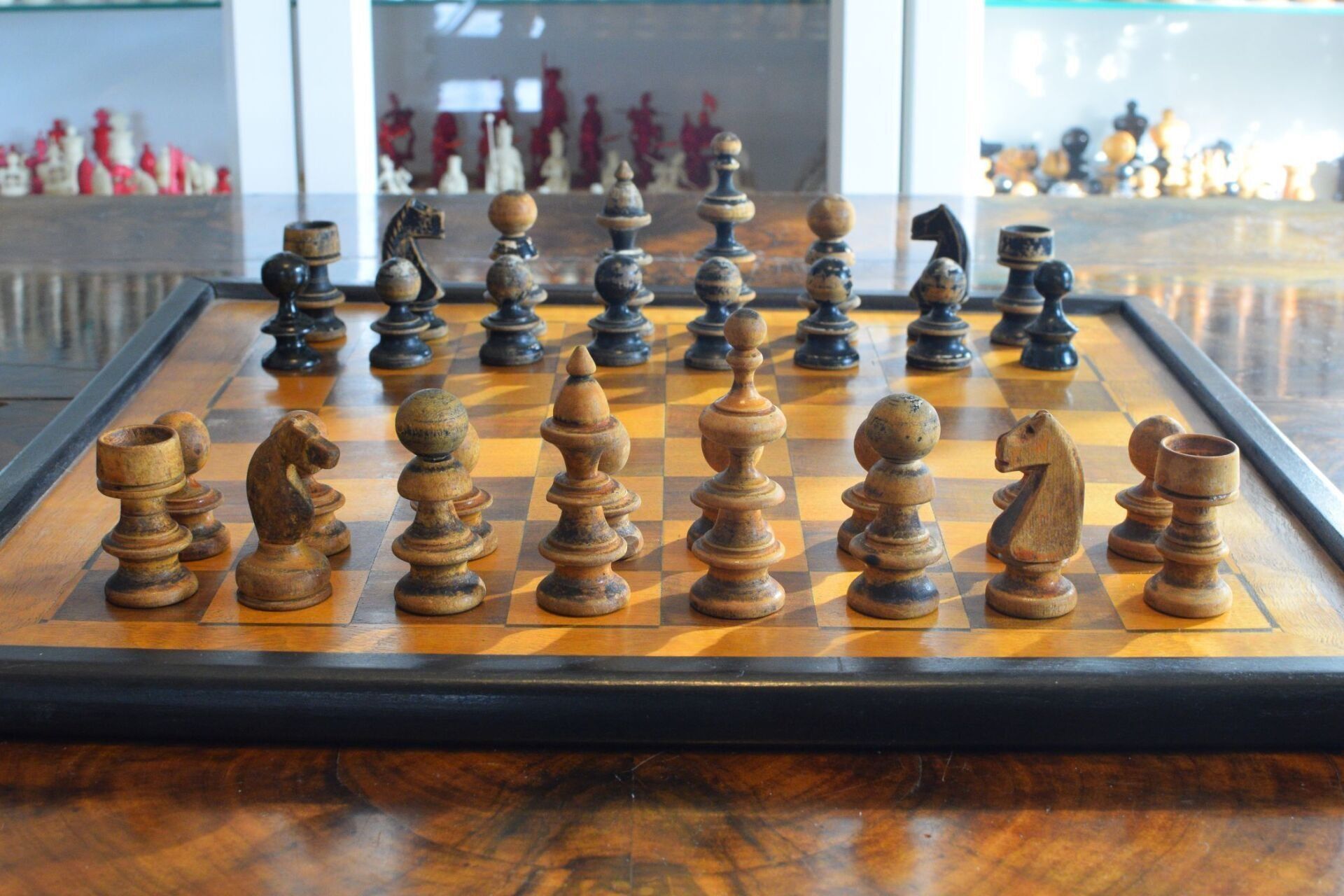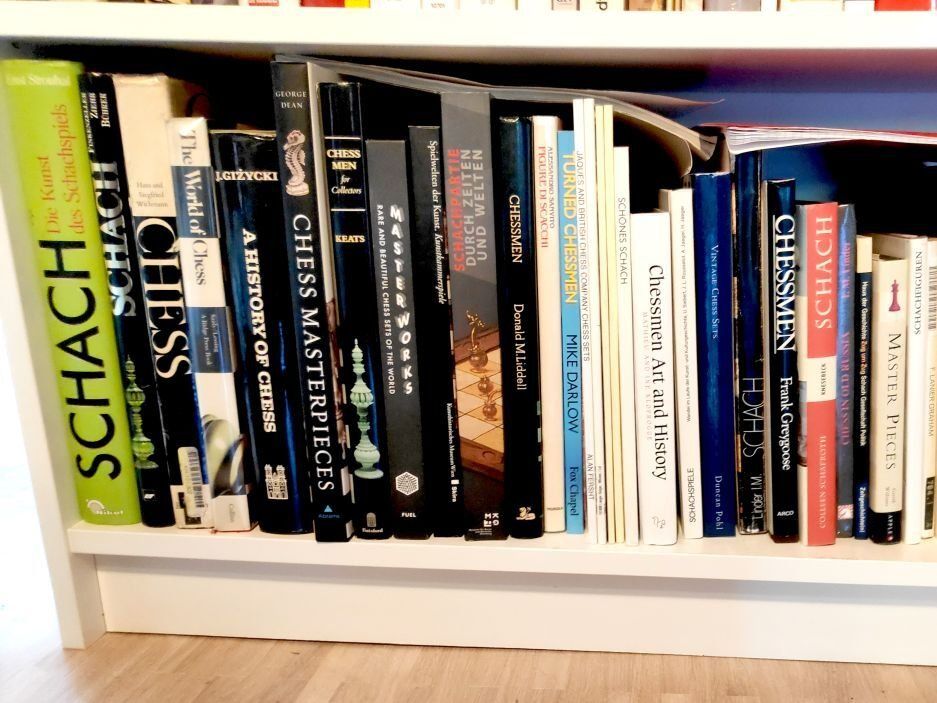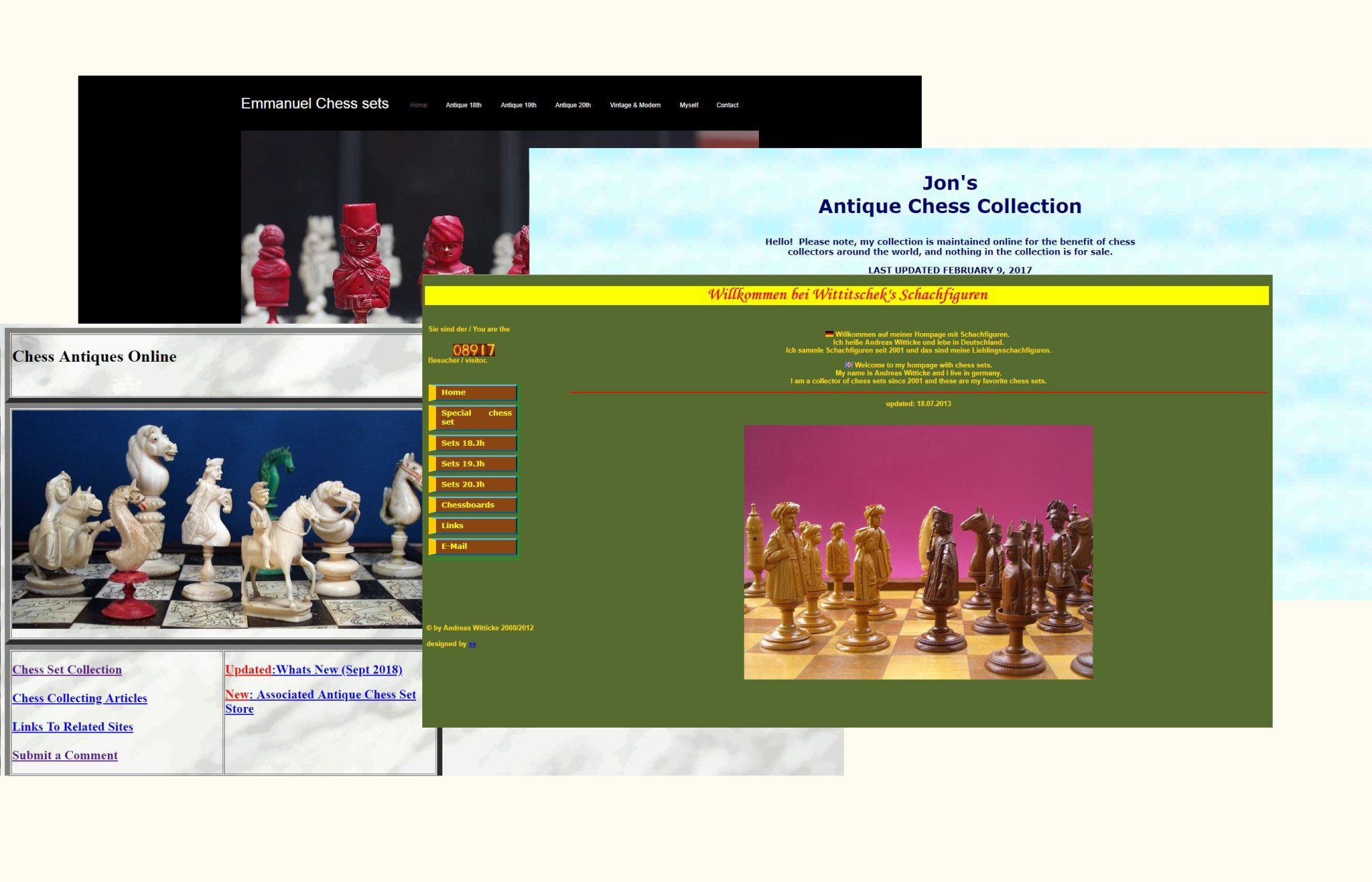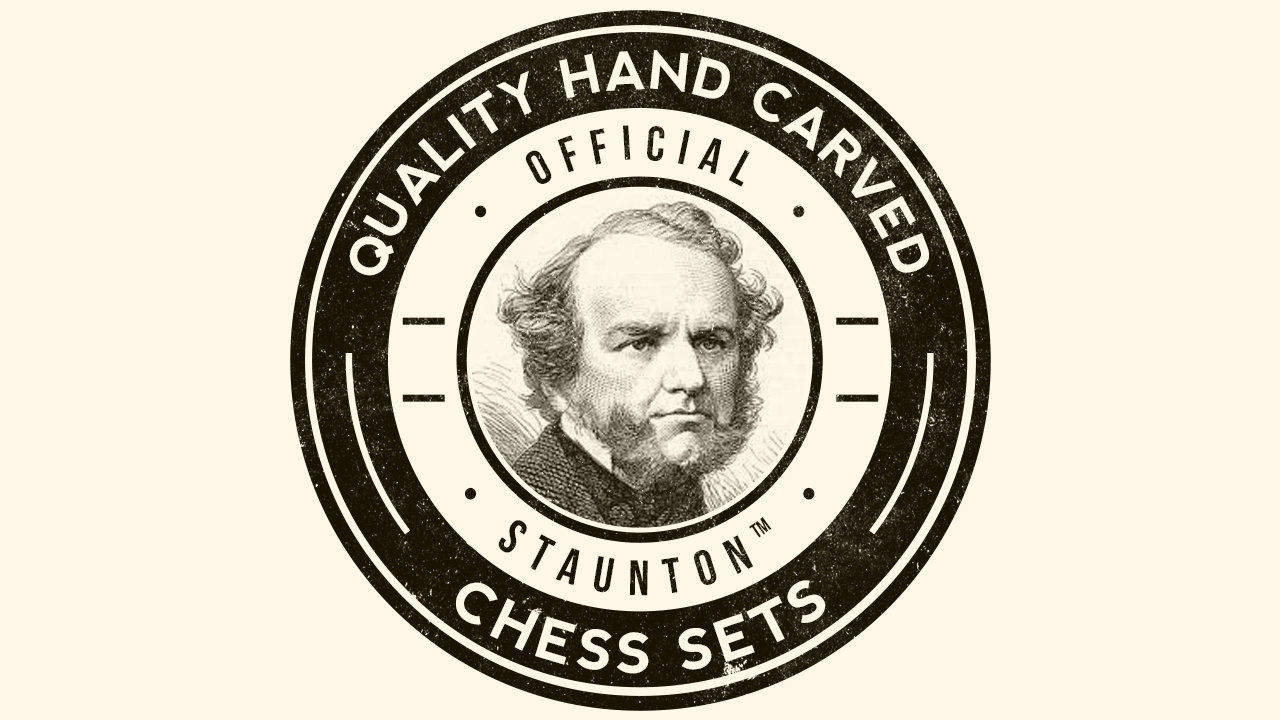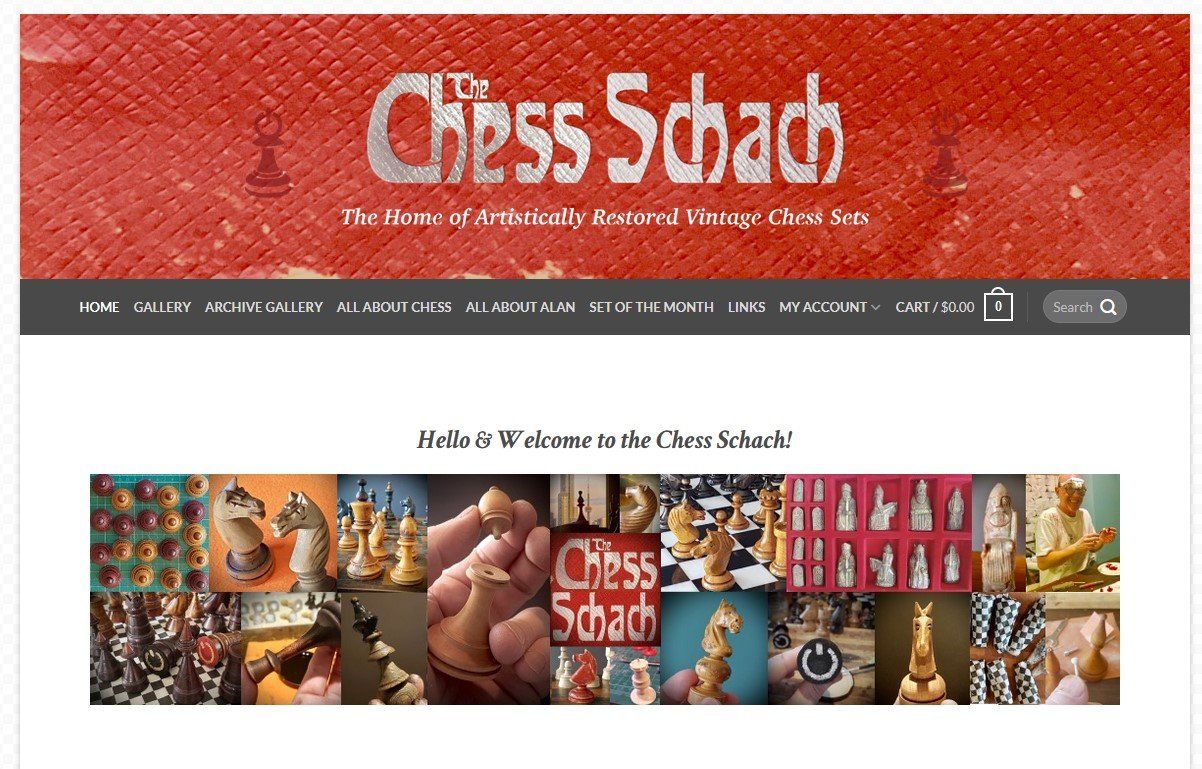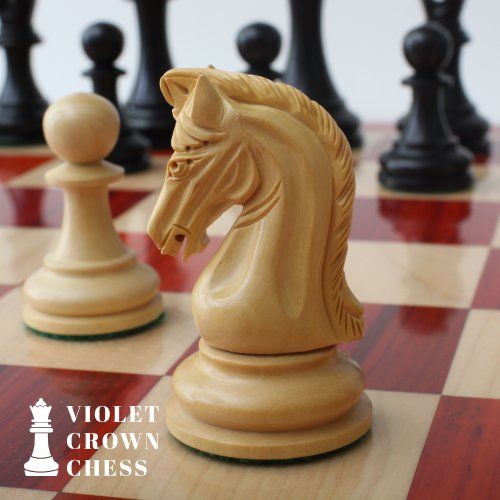Old English Chess Set, ca. 1780
Here is a chess set in the "Old English" pattern. The pieces are beautifully turned from boxwood, which has gained a rich patina, and rosewood, which in some pieces shows a beautiful wood grain.
Chess sets in the "Old English" pattern were omnipresent in the United Kingdom of the 18th and early 19th century. A standardization existed at best at individual well-known manufacturers, which can be recognized by their individual style until today. Apart from these manufacturers, there were many variations of Old English pieces, so that it is hardly possible to describe their characteristics in general terms. Pieces of the "Old English" style were usually turned from one block of wood. Early pieces of the 18th century are often characterized by the fact that the overall shape of the kings and queens tapers slightly towards the top and consists of an alternation of convex and concave parts in the area of the body, which in the later St. George pieces were further developed into largely symmetrical stylized disks that only differ in diameter. Crosses as a finish on the kings crowns are rather unusual in early pieces of the "Old English" style and only became common in the course of the 19th century. Together with the style of the knights and the tall shape of the pawns, I would regard this as an indication that this set was probably made in the late 18th century, i.e. around 1780-1800.
"'Les pions sont l'âme du jeu d'échecs." - the position in the last picture is from a game played in 1790 by François-André Danican Philidor against Andrew Smith in the London Chess Club. Philidor playing black has advanced all his pawns by one or two ranks and has just played 15. ...Ke7, thus connecting the rooks without the need to castle. He will soon relocate his knight to g6 followed by Rag8 to launch a fierce kingside attack, which Smith was not able to defend.
"'Les pions sont l'âme du jeu d'échecs." - the position in the last picture is from a game played in 1790 by François-André Danican Philidor against Andrew Smith in the London Chess Club. Philidor playing black has advanced all his pawns by one or two ranks and has just played 15. ...Ke7, thus connecting the rooks without the need to castle. He will soon relocate his knight to g6 followed by Rag8 to launch a fierce kingside attack, which Smith was not able to defend.
